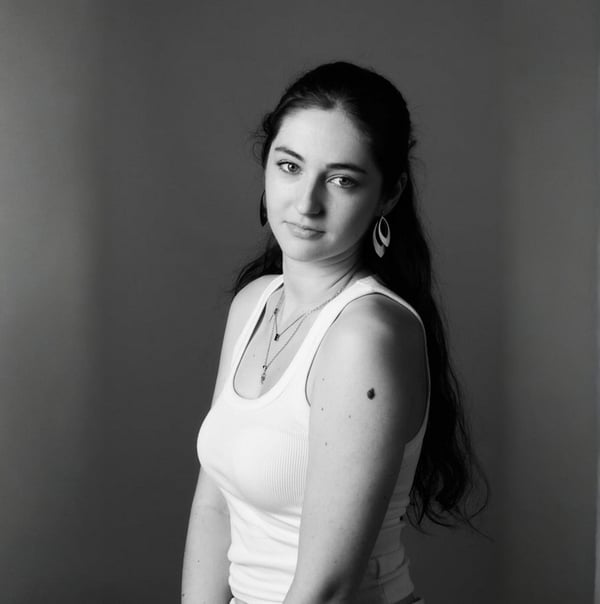Fashion Sketches: Inspiration & Drawing Tips
Table of Contents
- What Are Fashion Sketches?
- Types of Fashion Sketches
- Why Fashion Sketches Matter
- Tools for Fashion Sketching
- Where to Find Inspiration for Fashion Sketches
- Tips for Better Fashion Sketching
- Fashion Sketches in Education
- The Future of Fashion Sketching
- How Modelia Helps with Fashion Sketches
- FAQs About Fashion Sketches
- Conclusion
Fashion sketches are one of the first moves when it comes to create a fashion collection. After doing a moodboard and getting the inspiration, when designers must begin to create, they usually start with a sketch, drawing whatever comes to their mind. Long before a collection comes to life on the runway or in stores, every idea begins as a drawing on paper or on a digital tablet. Fashion illustration is both a practical tool and an artistic expression because it captures movement, fabric flow and mood, turning abstract ideas into something tangible.
Whether you are a fashion student, a professional designer or simply someone curious about the creative process behind clothing, learning how to create fashion sketches can transform the way you see garments.
In this article we will focus on how to improve fashion sketches, make them easier and how AI can do all this for us.
What Are Fashion Sketches?
Fashion sketches are drawings that represent clothing designs, accessories or entire outfits. They don't have to be perfect; in fact, they can be just a couple of lines if that's enough to convey the designer's idea. They're simply a way of capturing an abstract idea and turning it into something physical, even if it's still imperfect and in need of refinement.
A sketch doesn’t have to be a perfect piece of art. Some designers prefer minimal lines that suggest silhouette and proportion, while others go into great detail with textures, colors, and shading. The style of the sketch often depends on its purpose: brainstorming, technical documentation, or artistic presentation.
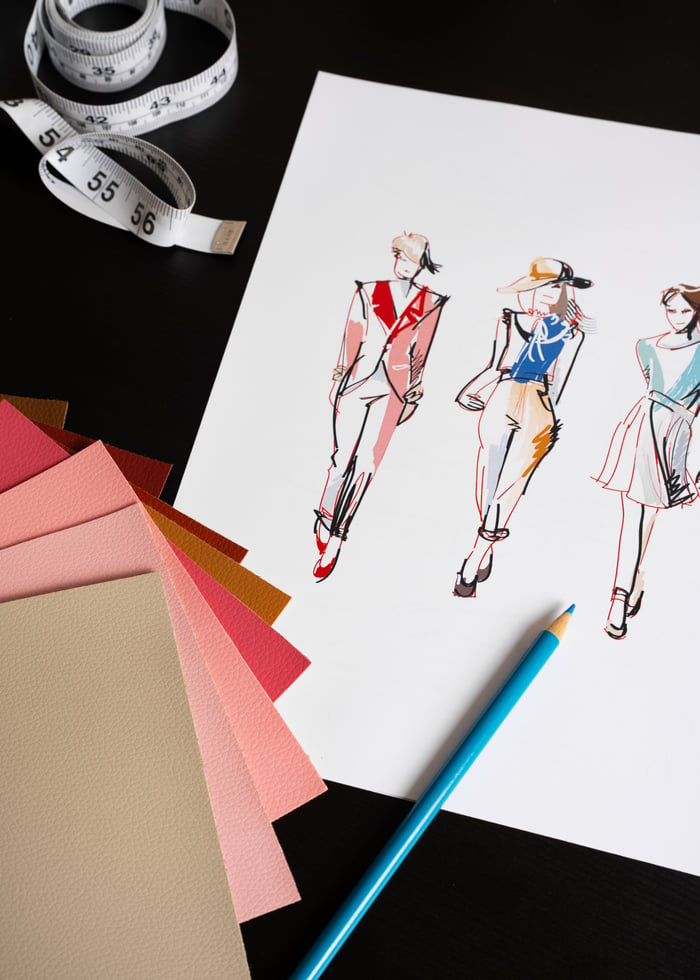
Types of Fashion Sketches
Fashion sketches are not all the same. Each type plays a unique role in the design process. Here are some sketching fashion ideas:
1. Croquis Sketches
A croquis is a quick drawing of a model’s body, often used as a template. Designers use it as a starting point to draw clothing ideas over it. Croquis sketches save time because you don’t have to redraw the body every time. They focus more on the garment than the figure itself, making them ideal for rapid concept exploration.
2. Illustrative Sketches
These sketches are more detailed and artistic. Illustrators often add color, texture, shading, and background elements to bring the design to life. They are not just functional but also beautiful pieces of art, often used in portfolios, presentations, or promotional materials.
3. Technical Flats
Technical sketches, also called “flats,” are detailed drawings that show garments without a figure. They highlight stitching, seams, zippers, buttons, and other construction details. Technical sketches are crucial for production teams and pattern makers because they provide clear instructions for manufacturing.
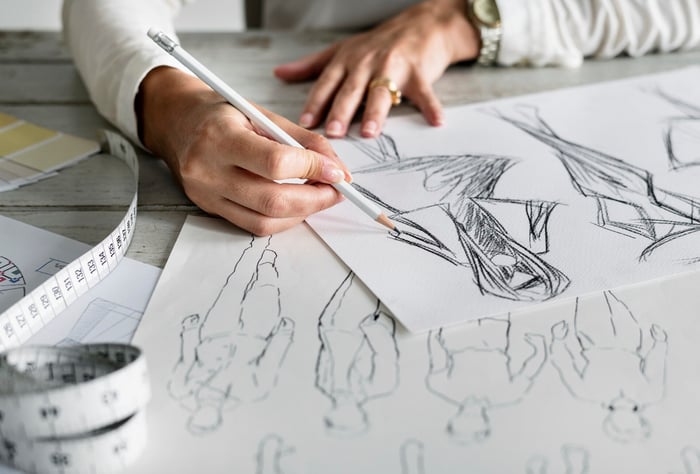
Why Fashion Sketches Matter
Fashion sketches are more than drawings; they are tools that bridge creativity and execution. Here’s why they’re so important:
Visual Communication: A sketch communicates ideas much faster than words. Designers can explain shape, proportion, and detail instantly.
Creative Exploration: Sketching allows for experimentation. You can try bold silhouettes or unusual fabric pairings on paper before committing resources.
Professional Workflow: In fashion houses, sketches form part of the design process alongside moodboards, CAD, and prototypes. They connect creative thinking with technical execution.
Artistic Identity: Many designers develop a recognizable sketching style, just as they do with their clothing designs.
Tools for Fashion Sketching
Depending on your preferences and workflow, you can approach fashion sketches with different tools. Each method offers unique benefits:
Traditional Tools
Many designers still start with pencil and paper. Graphite pencils, colored markers, and watercolor are popular choices. Sketchbooks remain portable and personal, making them perfect for spontaneous creativity. The tactile experience of drawing by hand helps some artists feel more connected to their designs.
Digital Tools
Tablets like the iPad with Procreate or Adobe Fresco allow for flexible sketching with layers, brushes, and undo options. Adobe Illustrator is especially popular for creating technical flats, since it ensures precision and scalability. Digital tools are also easier to integrate into professional workflows where files need to be shared or edited.
AI-Powered Tools
A new wave of AI sketching tools is changing the game. With AI, designers can generate quick ideas, variations, or even complete sketches based on prompts. Platforms like Modelia allow fashion brands to create AI-generated models wearing different outfits, making it easier to visualize designs without traditional sketches. While AI doesn’t replace the human touch, it accelerates brainstorming and adds new creative possibilities.
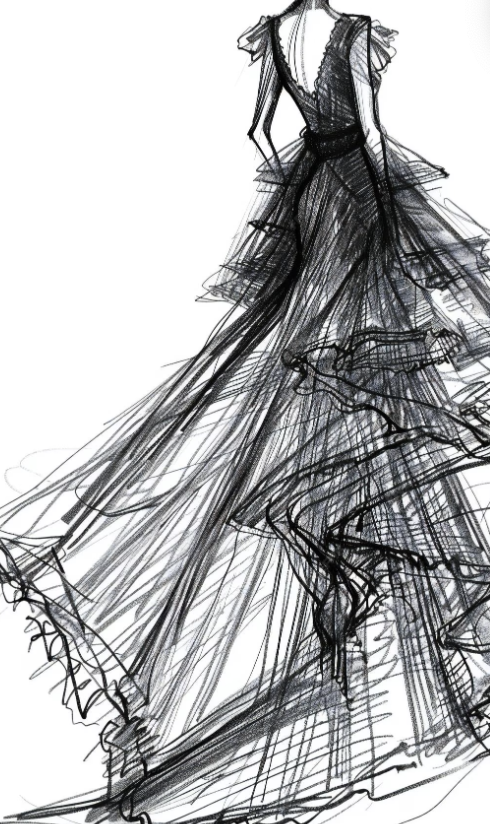
Where to Find Inspiration for Fashion Sketches
Every sketch begins with inspiration. Designers draw from multiple sources to create unique ideas:
Runway Shows: Watching live or digital fashion shows gives insight into trends, fabrics, and silhouettes.
Street Style: Everyday people often inspire some of the boldest looks. Sketching street outfits can sharpen observational skills.
Moodboards: Collecting images, textures, and colors into a moodboard can help guide the style and feel of sketches.
Nature and Architecture: Shapes, structures, and patterns from the environment often translate beautifully into fashion details.
Fashion History: Looking at archives or vintage magazines provides endless references for timeless silhouettes and cuts.
Tips for Better Fashion Sketching
Improving your sketches takes practice, but a few practical tips can help:
Start with Simple Lines: Focus on silhouette before adding details. A strong outline creates a strong design.
Practice Proportions: Study body proportions so your sketches feel balanced and realistic.
Experiment with Media: Try mixing pencil, ink, and digital tools to see what works best for your style.
Add Movement: Suggest fabric flow by drawing dynamic lines, not just static poses.
Work from References: Use photos or live models to understand posture, drape, and anatomy.
Don’t Aim for Perfection: Rough sketches often capture energy and creativity better than polished ones.
Create a Routine: Sketch daily, even if only for 10 minutes, to build confidence and speed.
Learn from Masters: Study the sketches of iconic designers to see how they simplify shapes and capture mood.
Fashion Sketches in Education
Fashion schools dedicate entire courses to sketching because it remains a core skill. Students are taught croquis drawing, fabric rendering, and digital sketching. While technology is evolving, sketching is still considered essential for developing creativity, observation, and design thinking.
Professors often encourage students to develop a personal sketching style. Some may lean toward technical precision, while others focus on expressive illustration. Both approaches are valuable in professional design work.
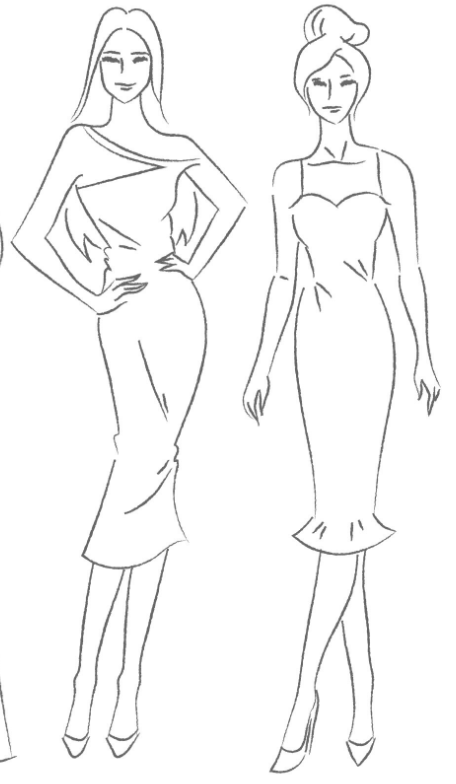
The Future of Fashion Sketching
With AI, 3D modeling, and AR (augmented reality) entering the fashion space, sketches are evolving. Some designers now combine traditional drawings with 3D avatars to test how garments move. AI can generate variations instantly, while AR tools allow designers to visualize sketches as digital garments on virtual models.
Despite these innovations, hand-drawn sketches continue to be valued for their authenticity and emotional expression. The future of sketching is likely to be hybrid, combining the tactile beauty of traditional illustration with the efficiency of digital and AI tools.
How Modelia Helps with Fashion Sketches
At Modelia, we focus on streamlining and making fashion design more creative through AI. Instead of relying solely on clothing sketches, brands can use AI models to preview how garments look in different outfits, styles, or color variations. This means you can explore design ideas more interactively, reducing the need for multiple manual sketches and bringing concepts closer to reality. Using AI, you can also create a realistic image of the drawn design in seconds.
By integrating AI-generated models with your sketches, you can create a complete workflow: sketch your ideas, test them digitally, and visualize them on realistic models. For fashion companies and independent designers, this combination of creativity and technology opens up new ways of working. Using Modelia, you can convert a sketch into an image or an image of a garment into a sketch of it in seconds. The best part is that you can try it for free.
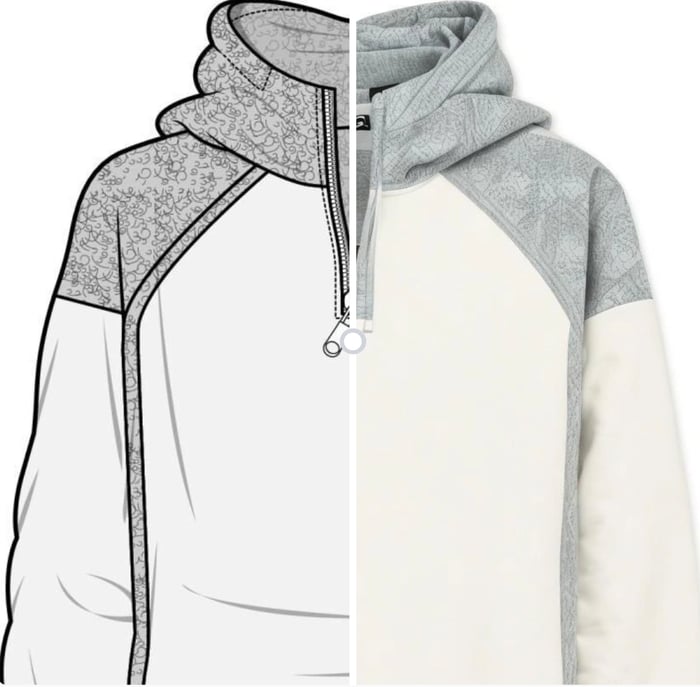
FAQs About Fashion Sketches
1. Do I need to be good at drawing to start fashion sketching?
Not at all. Fashion sketching is more about communication than perfect artistry. With practice, your sketches will improve.
2. What’s the difference between fashion sketches and fashion illustrations?
Sketches are often quick and functional, while illustrations are detailed and artistic, meant to present designs beautifully.
3. Which tools are best for beginners?
A simple pencil and sketchbook are enough to start. As you progress, you can try digital apps or markers.
4. Can AI replace traditional sketching?
AI can speed up idea generation, but it doesn’t replace the creative perspective of a human designer. Many professionals use both.
5. How long should a fashion sketch take?
It depends on the purpose. A quick croquis may take just a few minutes, while a detailed illustration can take hours.
6. Where can I practice sketching fashion?
You can sketch from magazines, live models, street style, or even replicate runway looks as practice.
Conclusion
Fashion sketches remain a cornerstone of design, balancing creativity, communication, and technical precision. From the first croquis to advanced digital illustrations, they are the bridge between imagination and reality. While tools and technologies are evolving, the essence of sketching, capturing an idea quickly and visually, remains unchanged.
Whether you prefer pencil and paper, digital apps, or experimenting with AI, sketching is a skill worth cultivating. It not only strengthens your design process but also helps you develop your personal artistic identity. And with tools like Modelia, you can push your sketches further by visualizing them on AI-generated models, making the design journey more dynamic than ever.
Fashion sketches will continue to evolve, but one thing is certain: they will always be at the heart of fashion design.
How would you rate this article:
Related Articles
- 10 AI Design Tools Revolutionizing Fashion and Ecommerce Design
- AI-Powered Video Creation: How Artificial Intelligence is Revolutionizing Video Production
- The Best Sustainable Fashion Brands Changing the Industry
- Influencer Marketing for Small Business: Step by Step Guide
- Best Fashion Brands on Instagram Right Now
- How to Use AI in Ecommerce: Boost Your Sales and Optimize Customer Experience
- How to Style Cool Baggy Outfits with Confidence
- The Best Tools for Flat Lay Design You Should Be Using
- Botika.io Pricing, Plans and Feature Breakdown
- Modelia vs Hautech.ai: Which AI Tool Is Best for Your Fashion Business?

